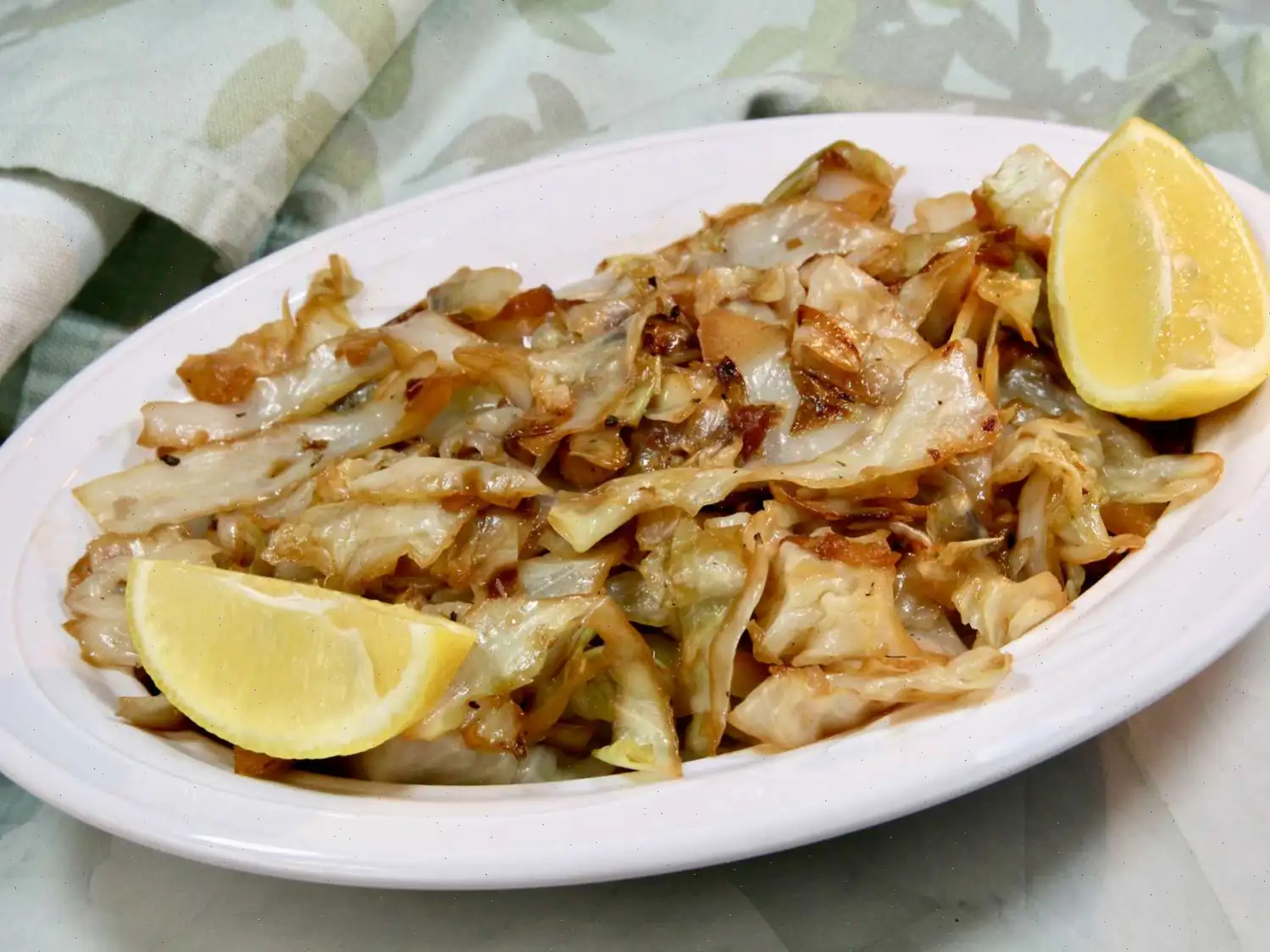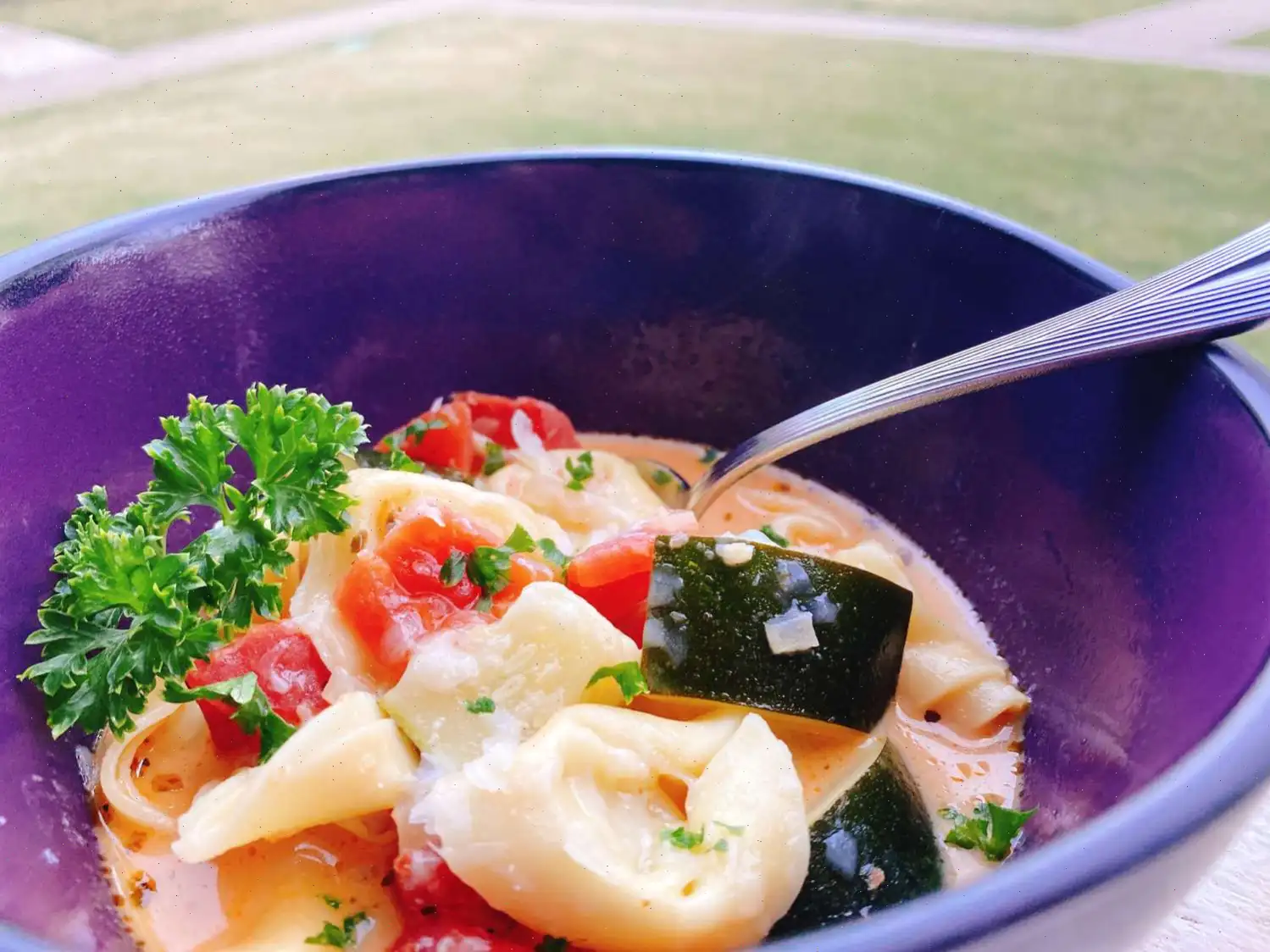
Sautéed Cabbage Recipe
Ingredients (for 4 servings):
- 1 small head green cabbage (about 2 pounds)
- 1 tablespoon olive oil
- 1 tablespoon unsalted butter
- 1 cup thinly-sliced onion
- 1 teaspoon minced garlic
- 1 tablespoon apple cider vinegar
- 1/2 teaspoon salt, or to taste
- 1/2 teaspoon freshly ground black pepper, or to taste
- 4 lemon wedges
Directions:
- Begin by removing any damaged outer leaves from the cabbage. Cut the cabbage in half through the stem, then cut each half into quarters. Carefully remove the cores and slice the cabbage thinly.
- Heat a large skillet over medium heat. Add the olive oil and butter. Once the butter is melted, add the onions and saut for 3 to 4 minutes until they become translucent and lightly browned.
- Add the minced garlic to the skillet and cook for about 30 seconds until fragrant.
- Next, add the sliced cabbage to the pan and mix it well with the onions. Stir frequently, allowing the cabbage to cook for 13 to 16 minutes, until it becomes tender and lightly browned. Be sure not to let it burn. If the cabbage starts to dry out, add a small amount of water to the pan.
- Drizzle the apple cider vinegar over the cabbage and stir well. Continue to cook for 1 more minute.
- Season the cabbage to taste with salt and pepper.
- Serve the cabbage hot, garnished with a wedge of fresh lemon.
Nutrition Facts (per serving):
- Calories: 204
- Fat: 7g (9% of Daily Value)
- Saturated Fat: 2g (12% of Daily Value)
- Cholesterol: 8mg (3% of Daily Value)
- Sodium: 295mg (13% of Daily Value)
- Total Carbohydrates: 39g (14% of Daily Value)
- Dietary Fiber: 12g (41% of Daily Value)
- Total Sugars: 16g
- Protein: 7g (13% of Daily Value)
- Vitamin C: 210mg (234% of Daily Value)
- Calcium: 211mg (16% of Daily Value)
- Iron: 2mg (10% of Daily Value)
- Potassium: 954mg (20% of Daily Value)
Note: Percent Daily Values are based on a 2,000 calorie diet. Your daily values may be higher or lower depending on your calorie needs.

Origin and History of Sauted Cabbage
Sauted cabbage is a dish with deep roots in many traditional cuisines around the world. The use of cabbage dates back thousands of years, with evidence of its cultivation in ancient Greece and Rome. The practice of sauting cabbage, however, is relatively modern, emerging as a practical way to prepare the vegetable in households worldwide. The dish became particularly popular in European countries, where cabbage was a staple due to its affordability and long shelf-life. In the United States, the popularity of sauted cabbage grew as part of the broader trend of simple, hearty vegetable dishes during the 19th century.
Regional Variations and Cultural Significance
The sauted cabbage recipe, though widely adopted, has regional variations that bring distinct flavors and ingredients to the dish. In Southern cuisine, for example, its common to add smoked meats like ham or bacon, infusing the cabbage with rich, savory flavors. In Eastern European countries, sauted cabbage often features caraway seeds, a spice that complements the cabbage's mild sweetness. In India, cabbage may be sauted with a blend of spices like turmeric and cumin, creating a unique twist on the classic dish. Regardless of the region, sauted cabbage is known for its simplicity and versatility, making it an easy side dish to pair with various main courses.
How Sauted Cabbage Differs from Similar Dishes
While sauted cabbage is often compared to other cabbage-based dishes, it stands apart in its cooking technique and flavor profile. Unlike braised cabbage, which is typically cooked slowly in liquid, sauted cabbage is crisp-tender, lightly caramelized, and cooked quickly in a skillet with minimal moisture. This results in a dish with a slightly crispy texture and a more pronounced natural sweetness. Another common cabbage dish, coleslaw, is served cold and features raw cabbage mixed with creamy dressings. Sauted cabbage, on the other hand, is a warm side dish that brings out the vegetables deeper, roasted flavors.
Where Sauted Cabbage is Typically Served
Sauted cabbage is often served as a side dish in many home kitchens and restaurants. It pairs well with hearty meats like roasted chicken, pork chops, or sausages, as well as with vegetarian and vegan dishes. In addition to its role as a side dish, sauted cabbage is commonly found on the tables of holiday meals and family gatherings. In some cultures, its also a key part of New Years celebrations, believed to bring good fortune for the year ahead. Its flexibility in pairing with a wide variety of cuisines makes it a staple in many homes.
Interesting Facts about Sauted Cabbage
Cabbage has been praised for its health benefits for centuries. Rich in fiber, vitamins, and antioxidants, it is known for promoting digestive health and boosting the immune system. In ancient times, cabbage was used to treat ailments like digestive issues and even wounds. Interestingly, during the 19th century, cabbage was considered a "poor mans vegetable," as it was cheap and easy to grow. Despite this, its nutritional value and versatility have made it a beloved vegetable worldwide. Today, sauted cabbage continues to be appreciated not only for its health benefits but also for its delicious, comforting flavor.
You can listen to this recipe in AI audio format. Simply click the play button below to listen to the content in a format that suits you best. It’s a great way to absorb information on the go!
FAQ about Sautéed Cabbage Recipe
Comments
Kathleen Sanchez
05/22/2025 07:20:49 PM
I sprinkled some Tajin citrus flavored seasoning on the cabbage and it was absolutely delicious. I've always been a fan of cooked cabbage, so this recipe is definitely a keeper.
Betty Green
02/27/2025 06:48:29 AM
I followed the recipe exactly and it turned out delicious! I paired it with lemon garlic seasoned chicken for a simple and quick dinner.







